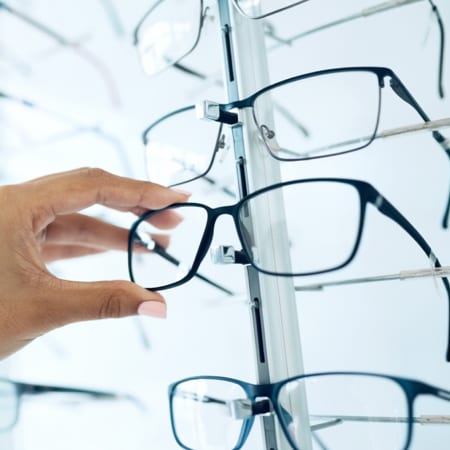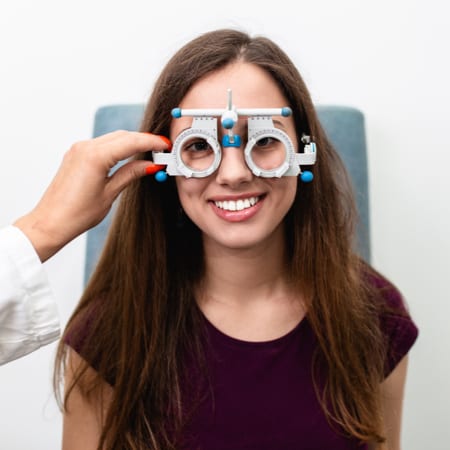Your eyes are often called the windows to the soul, and like any window, they require regular care to remain clear and healthy. Macular degeneration and glaucoma are two common eye conditions that can significantly impact vision, but they are not the same.
Although these conditions differ, early detection is crucial for both. Identifying them as soon as possible allows you to explore treatment and management options with your eye doctor. Fortunately, comprehensive eye exams include screening for macular degeneration and glaucoma, as both can develop without noticeable symptoms in their early stages.
What is Macular Degeneration?
Macular degeneration, also known as age-related macular degeneration (AMD), is the leading cause of blindness among adults over 50 in North America. AMD affects the macula, a small part of the retina responsible for sharp, central vision. Imagine trying to read a book or recognize a friend’s face without clear central vision—it’s nearly impossible.
Types of Macular Degeneration
There are two types of macular degeneration:
- Dry Macular Degeneration is more common and progresses slowly. It occurs when the tissue of the macula thins out over time.
- Wet Macular Degeneration is less common but more severe. It happens when abnormal blood vessels grow under the retina and leak fluid, leading to rapid vision loss.
Symptoms of Macular Degeneration
Symptoms of macular degeneration can be subtle at first, progressing over time. You might notice blurred or distorted vision, especially when reading or looking at faces. As the condition worsens, central vision loss can become significant. However, peripheral vision usually remains unaffected, allowing you to see objects to the side.
What is Glaucoma?

Glaucoma is a group of eye conditions that damage the optic nerve, which is essential for clear vision. Often called “the silent thief of sight,” glaucoma affects over 450,000 Canadians and is a leading cause of blindness. The damage is typically caused by abnormally high eye pressure, though some forms such as normal-tension glaucoma can develop without increased pressure.
Types of Glaucoma
There are several types of glaucoma, but the most common are:
- Open-Angle Glaucoma: The most prevalent form, progressing slowly over time with no early warning signs.
- Angle-Closure Glaucoma: Less common but can develop suddenly, requiring immediate medical attention to prevent rapid vision loss.
Symptoms of Glaucoma
Unlike macular degeneration, glaucoma often develops without noticeable symptoms in its early stages. That’s why it’s called the “silent thief of sight”—many people don’t realize they have it until significant vision loss has already occurred. When symptoms do appear, they may include:
- Patchy blind spots in your peripheral vision
- Tunnel vision in advanced stages
Since early detection is key, comprehensive eye exams are essential for diagnosing glaucoma before irreversible damage occurs.
Key Differences Between Glaucoma & Macular Degeneration
While both macular degeneration and glaucoma impact vision, they do so in distinct ways:
- Macular degeneration primarily affects central vision, making it difficult to see straight ahead, recognize faces, or read.
- Glaucoma mainly damages peripheral vision, leading to a gradual narrowing of the field of view.
Onset & Progression
- Macular degeneration typically progresses slowly, especially in its dry form, allowing for some adaptation and management.
- Glaucoma can either develop gradually or suddenly, depending on the type. For example, angle-closure glaucoma can cause a rapid, painful increase in eye pressure, leading to sudden vision loss that requires immediate medical attention.
Risk Factors for Macular Degeneration
Age is the most significant risk factor for macular degeneration, hence the name. But other risk factors include:
- Genetics
- Smoking
- Family history of AMD
- A diet high in saturated fat
- High blood pressure
Risk Factors for Glaucoma
Age is also a critical risk factor for glaucoma, but there are others, these include:
- High intraocular pressure
- Thin corneas
- A family history of glaucoma
- Diabetes
- High blood pressure
- Previous eye injury or trauma
- Long-term steroid use
Since early detection is key, routine eye exams are crucial for identifying both glaucoma and macular degeneration before they cause significant vision loss.
The Importance of Regular Eye Exams
Routine eye exams are one of the best ways to detect macular degeneration and glaucoma early. Since both conditions can develop without significant symptoms, comprehensive eye evaluations allow eye care professionals to monitor changes in eye health and recommend appropriate interventions.
The Canadian Association of Optometrists recommends that most adults get a comprehensive eye examination every 1 to 2 years, depending on age and preexisting conditions or risk factors. You should ultimately follow your eye doctor’s recommendations as they consider your unique situation.
Understanding the Differences Can Lead to Better Eye Health
Macular degeneration and glaucoma are two distinct eye diseases with different causes, symptoms, and treatments. While macular degeneration primarily affects central vision, glaucoma impacts peripheral vision, and both conditions require different approaches to management.
Recognizing the differences between these conditions can help people take proactive steps in preserving their eyesight. Come visit us at Woodstock Vision Care to maintain a healthy lifestyle by scheduling regular eye exams and following recommendations to support long-term eye health.
















